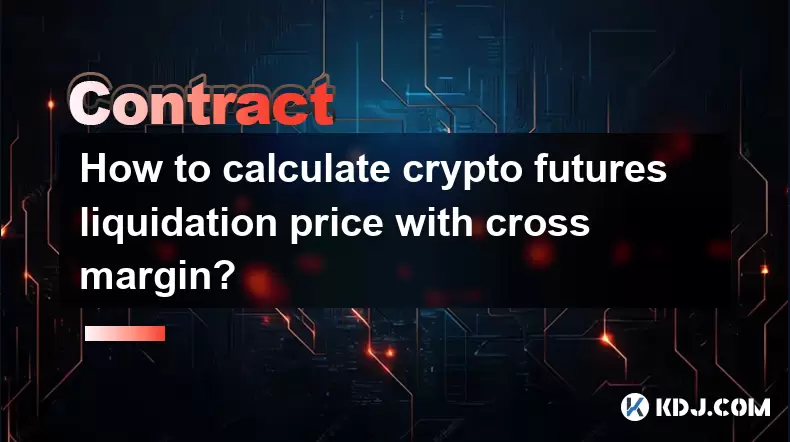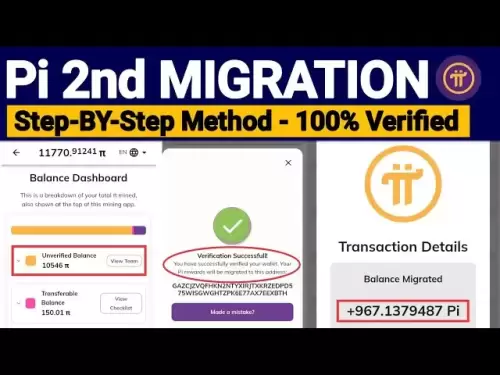-
 Bitcoin
Bitcoin $117,991.5647
-0.03% -
 Ethereum
Ethereum $2,966.4808
0.18% -
 XRP
XRP $2.8076
0.64% -
 Tether USDt
Tether USDt $1.0003
0.00% -
 BNB
BNB $689.9050
-0.63% -
 Solana
Solana $162.0407
-0.80% -
 USDC
USDC $0.9999
0.00% -
 Dogecoin
Dogecoin $0.1995
-1.51% -
 TRON
TRON $0.3001
-1.21% -
 Cardano
Cardano $0.7426
3.25% -
 Hyperliquid
Hyperliquid $47.7978
2.84% -
 Stellar
Stellar $0.4411
16.52% -
 Sui
Sui $3.4267
0.15% -
 Chainlink
Chainlink $15.3148
0.07% -
 Bitcoin Cash
Bitcoin Cash $506.5880
-1.91% -
 Hedera
Hedera $0.2222
12.41% -
 Avalanche
Avalanche $21.2049
1.67% -
 UNUS SED LEO
UNUS SED LEO $9.0606
-0.19% -
 Shiba Inu
Shiba Inu $0.0...01325
-0.86% -
 Toncoin
Toncoin $2.9979
0.32% -
 Litecoin
Litecoin $94.3717
1.13% -
 Polkadot
Polkadot $3.9873
-0.29% -
 Monero
Monero $336.1497
0.92% -
 Dai
Dai $0.9999
-0.01% -
 Uniswap
Uniswap $8.5189
-0.60% -
 Ethena USDe
Ethena USDe $1.0005
-0.04% -
 Pepe
Pepe $0.0...01236
-0.92% -
 Bitget Token
Bitget Token $4.4002
-0.23% -
 Aave
Aave $303.5433
1.05% -
 Bittensor
Bittensor $391.1314
-0.35%
How to calculate crypto futures liquidation price with cross margin?
Cross margin in crypto futures trading uses total account equity as collateral, affecting liquidation prices dynamically based on unrealized gains, losses, and overall portfolio risk.
Jul 11, 2025 at 12:29 am

Understanding Cross Margin in Crypto Futures Trading
In crypto futures trading, cross margin refers to a margin mode where the entire account balance is used as collateral for all open positions. This differs from isolated margin, which allocates a fixed amount of funds per trade. When using cross margin, traders benefit from increased protection against liquidation since the system can pull funds from the overall account equity if needed.
The key advantage of cross margin lies in its flexibility and risk distribution. However, this also means that when losses occur across multiple positions, the system will use the total available balance to prevent liquidations. Understanding how this mechanism affects the liquidation price calculation is crucial for managing risk effectively.
What Is Liquidation Price in Futures Trading?
In futures trading, the liquidation price is the price at which a trader’s position gets automatically closed by the exchange due to insufficient margin. This process is designed to prevent negative balances and protect both the trader and the platform.
When trading with cross margin, the liquidation price isn’t solely based on the initial margin allocated to a specific trade. Instead, it considers the total account equity, which includes all available assets and profits or losses from other open positions. Therefore, calculating the exact liquidation price requires factoring in several dynamic variables such as entry price, leverage, contract size, and current unrealized PnL (Profit and Loss).
Key Components in Calculating Liquidation Price with Cross Margin
To accurately calculate the liquidation price under cross margin, traders must understand the following components:
- Entry Price: The price at which the position was opened.
- Position Size: Measured in contracts or USD value depending on the exchange.
- Leverage Used: Higher leverage increases the risk of liquidation.
- Total Account Equity: Includes all available funds and floating profits/losses.
- Maintenance Margin Requirement: The minimum margin required to keep a position open.
These elements interact dynamically, especially under cross margin, where unrealized gains and losses from other trades influence the available margin. A drop in equity from other losing positions could bring the trader closer to liquidation even if the current position remains stable.
Step-by-Step Calculation of Liquidation Price Using Cross Margin
To perform the calculation manually, follow these steps:
Determine the Position Value: Multiply the number of contracts by the contract size and entry price.
Calculate Initial Margin: Divide the position value by the leverage used.
Find Maintenance Margin: Typically a percentage set by the exchange (e.g., 0.5%).
Subtract Unrealized Losses from Equity: If there are other open positions, subtract their unrealized losses from total equity.
Compute Available Margin: Total equity minus used margin from other positions.
Use the Liquidation Formula:
$$
\text{Liquidation Price} = \frac{\text{Entry Price} \times (\text{Used Margin} - \text{Available Margin})}{\text{Used Margin} - (\text{Maintenance Margin Rate} \times \text{Position Value})}
$$
This formula helps estimate the price level at which the system would trigger a liquidation based on the available margin under cross margin settings.
Using Exchange Tools and Third-party Calculators
Most modern exchanges provide built-in liquidation calculators or visual indicators showing the liquidation price for each open position in real-time. These tools factor in all relevant parameters automatically, offering an accurate view without requiring manual computation.
Additionally, third-party platforms like Bybt, CoinGlass, and Futures Calculator offer advanced tools for simulating liquidation scenarios under various margin modes. These calculators allow users to input custom values for entry price, leverage, and account balance to see how changes affect the liquidation threshold.
Traders should verify whether the calculator supports cross margin logic, as some tools may default to isolated margin calculations unless specified otherwise.
Risks and Considerations in Cross Margin Liquidation
While cross margin provides additional buffer against sudden liquidations, it introduces new risks:
- Exposure to Total Portfolio Risk: A significant drawdown in one position can impact all open trades.
- Unrealized Losses Impacting Margin: Even profitable trades can be liquidated if other positions drain available equity.
- Complexity in Risk Management: Monitoring multiple positions becomes more intricate compared to isolated margin.
Traders should maintain a healthy margin ratio and avoid over-leveraging, especially when managing multiple concurrent trades under cross margin.
Frequently Asked Questions
Q: Can I switch between cross and isolated margin while holding a position?
A: Most exchanges do not allow switching margin modes while holding open positions. You must close all active trades before changing the margin mode.
Q: Does cross margin increase my maximum allowable leverage?
A: No, cross margin does not change the maximum leverage offered by the exchange. It only affects how margin is allocated across positions.
Q: Why does my liquidation price change even if my position remains open?
A: Under cross margin, your liquidation price fluctuates based on changes in account equity, unrealized PnL from other trades, and market volatility.
Q: Are liquidation prices the same across all exchanges?
A: No, liquidation prices may vary between exchanges due to differences in maintenance margin rates, fee structures, and margin calculation methodologies.
Disclaimer:info@kdj.com
The information provided is not trading advice. kdj.com does not assume any responsibility for any investments made based on the information provided in this article. Cryptocurrencies are highly volatile and it is highly recommended that you invest with caution after thorough research!
If you believe that the content used on this website infringes your copyright, please contact us immediately (info@kdj.com) and we will delete it promptly.
- Little Pepe, Pepe Coin, and Bonk: Meme Coin Mania Sweeping Crypto in 2025!
- 2025-07-13 22:36:38
- ADA, NEAR, BlockDAG: Crypto Trends and Insights You Can't Miss (NYC Style)
- 2025-07-13 22:36:38
- TRUMP Tokens Unlocked: A Deep Dive into World Liberty Financial and Aqua 1's $100M Investment
- 2025-07-13 22:50:37
- Cryptos Under $0.10: Solana's Successors and the Top 10 Potential
- 2025-07-13 22:50:37
- Crypto, Gold, and Bitcoin: A New York Minute on the Digital Gold Rush
- 2025-07-13 20:30:16
- Crypto iGaming in India: JetTon, LunarBet, and the Evolving Landscape
- 2025-07-13 20:50:16
Related knowledge

Psychology of trading Bitcoin contracts
Jul 13,2025 at 02:50am
Understanding the Emotional Rollercoaster of Bitcoin Futures TradingBitcoin contract trading, especially in the form of futures, introduces a high lev...

Best time of day to trade Bitcoin contracts?
Jul 13,2025 at 05:29am
Understanding Bitcoin Contracts and Their VolatilityBitcoin contracts, particularly futures contracts, are derivative instruments that allow traders t...

How to use Fibonacci levels in Bitcoin contract trading?
Jul 13,2025 at 08:07am
Understanding Fibonacci Levels in TradingFibonacci levels are a technical analysis tool used by traders to identify potential support and resistance z...

Understanding the Bitcoin futures term structure
Jul 13,2025 at 08:28am
What is Bitcoin Futures Term Structure?The Bitcoin futures term structure refers to the relationship between the prices of Bitcoin futures contracts w...

What are the trading hours for Bitcoin futures?
Jul 13,2025 at 12:14pm
Understanding Bitcoin Futures Trading HoursBitcoin futures are derivative contracts that allow traders to speculate on the future price of Bitcoin wit...

How to withdraw profits from a futures account?
Jul 13,2025 at 07:07am
Understanding Futures Accounts and Withdrawal MechanicsIn the cryptocurrency space, a futures account is used to trade contracts that derive their val...

Psychology of trading Bitcoin contracts
Jul 13,2025 at 02:50am
Understanding the Emotional Rollercoaster of Bitcoin Futures TradingBitcoin contract trading, especially in the form of futures, introduces a high lev...

Best time of day to trade Bitcoin contracts?
Jul 13,2025 at 05:29am
Understanding Bitcoin Contracts and Their VolatilityBitcoin contracts, particularly futures contracts, are derivative instruments that allow traders t...

How to use Fibonacci levels in Bitcoin contract trading?
Jul 13,2025 at 08:07am
Understanding Fibonacci Levels in TradingFibonacci levels are a technical analysis tool used by traders to identify potential support and resistance z...

Understanding the Bitcoin futures term structure
Jul 13,2025 at 08:28am
What is Bitcoin Futures Term Structure?The Bitcoin futures term structure refers to the relationship between the prices of Bitcoin futures contracts w...

What are the trading hours for Bitcoin futures?
Jul 13,2025 at 12:14pm
Understanding Bitcoin Futures Trading HoursBitcoin futures are derivative contracts that allow traders to speculate on the future price of Bitcoin wit...

How to withdraw profits from a futures account?
Jul 13,2025 at 07:07am
Understanding Futures Accounts and Withdrawal MechanicsIn the cryptocurrency space, a futures account is used to trade contracts that derive their val...
See all articles

























































































